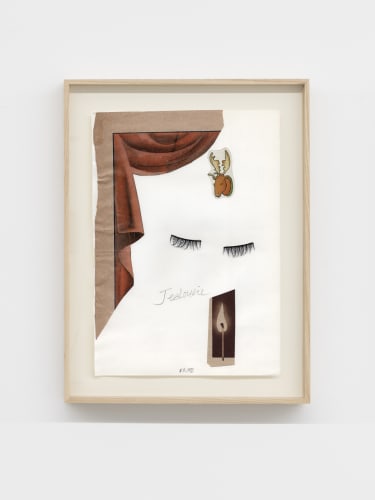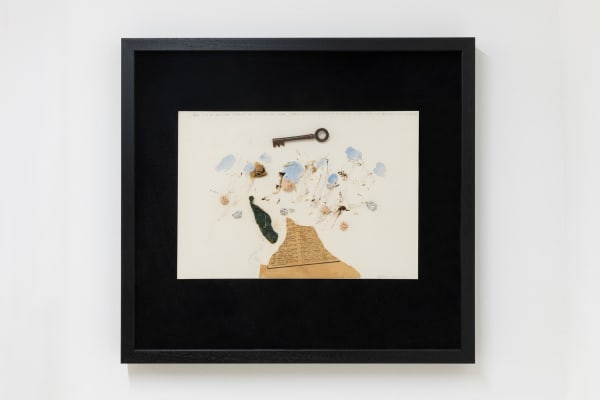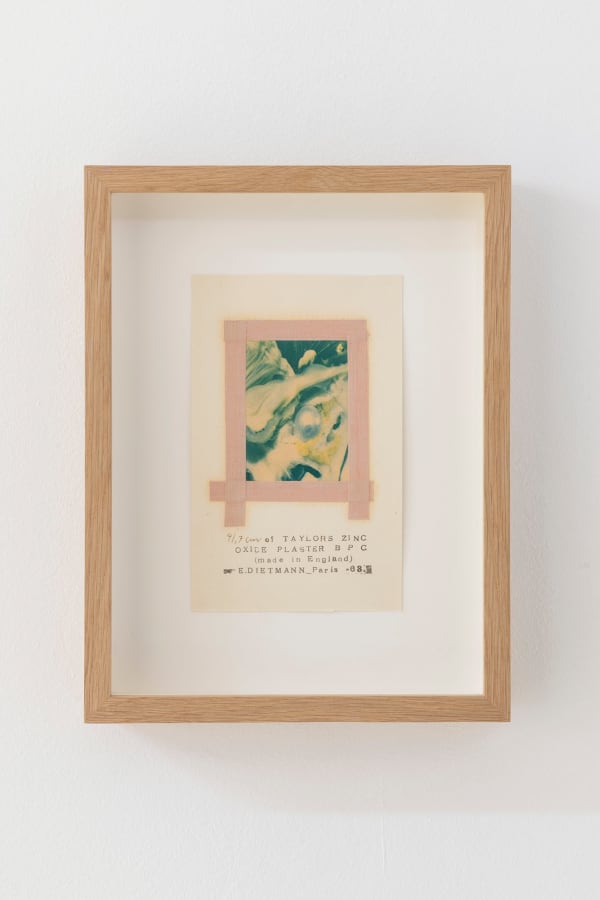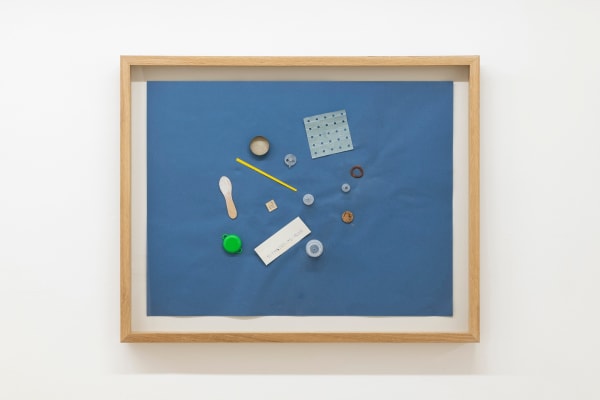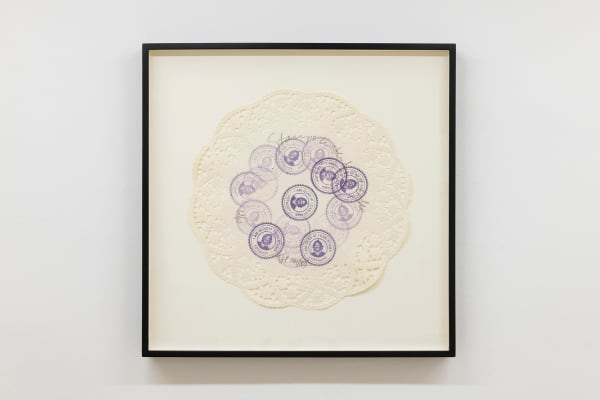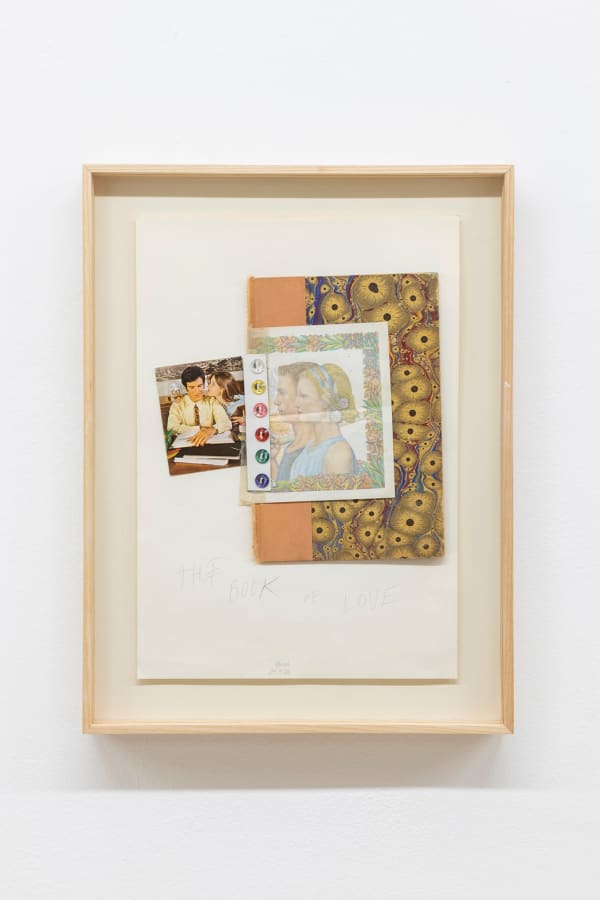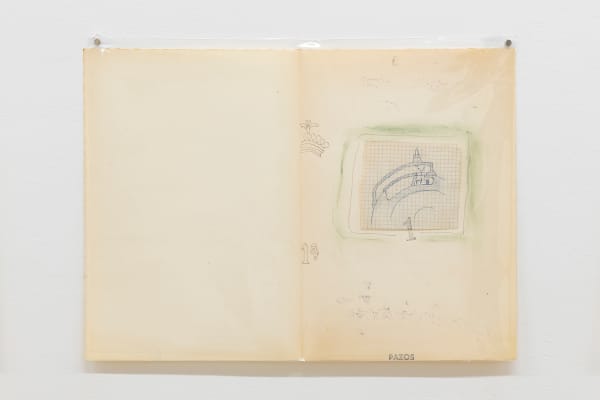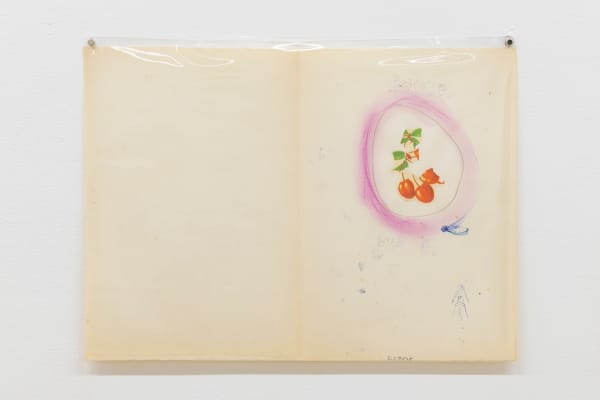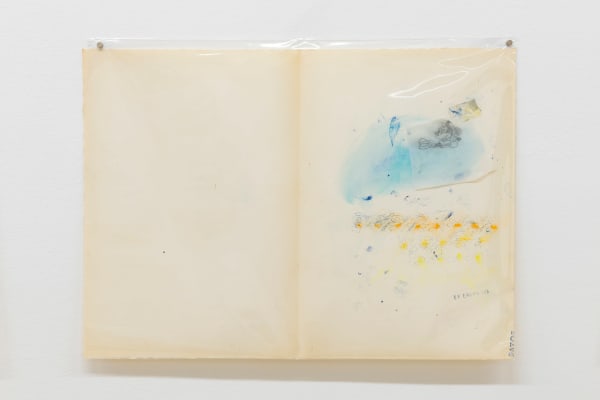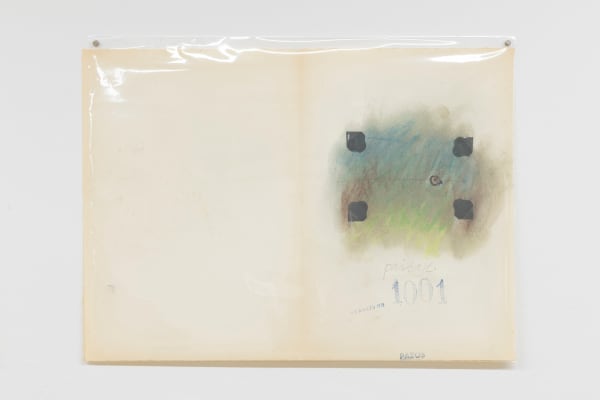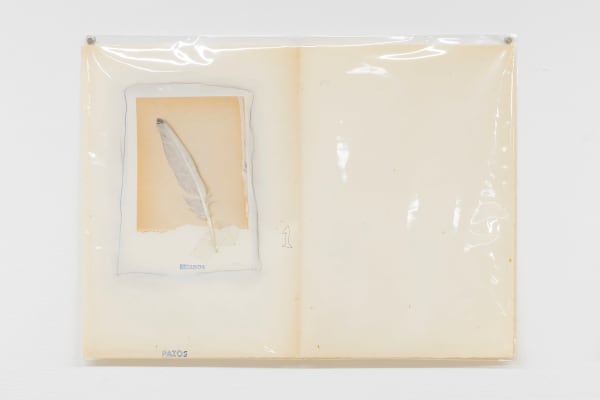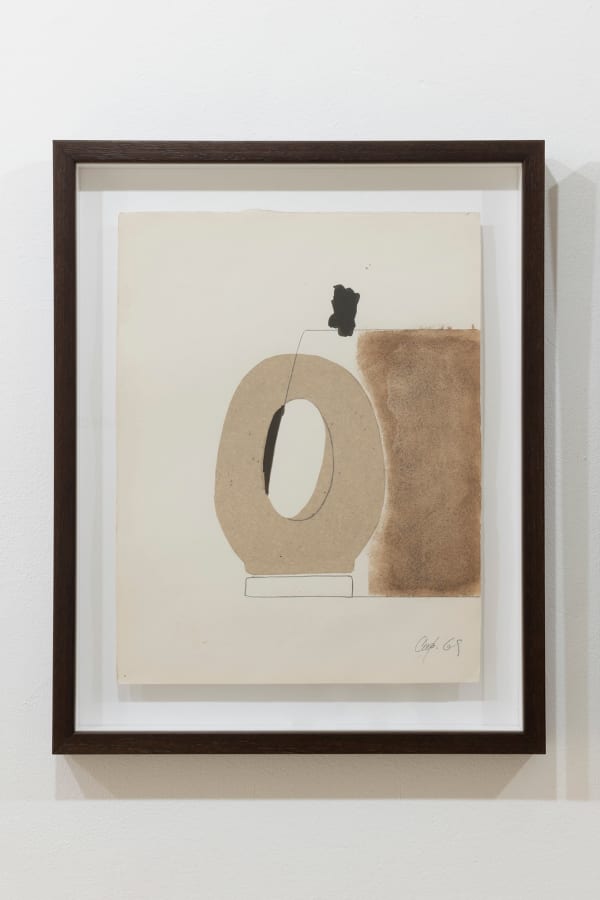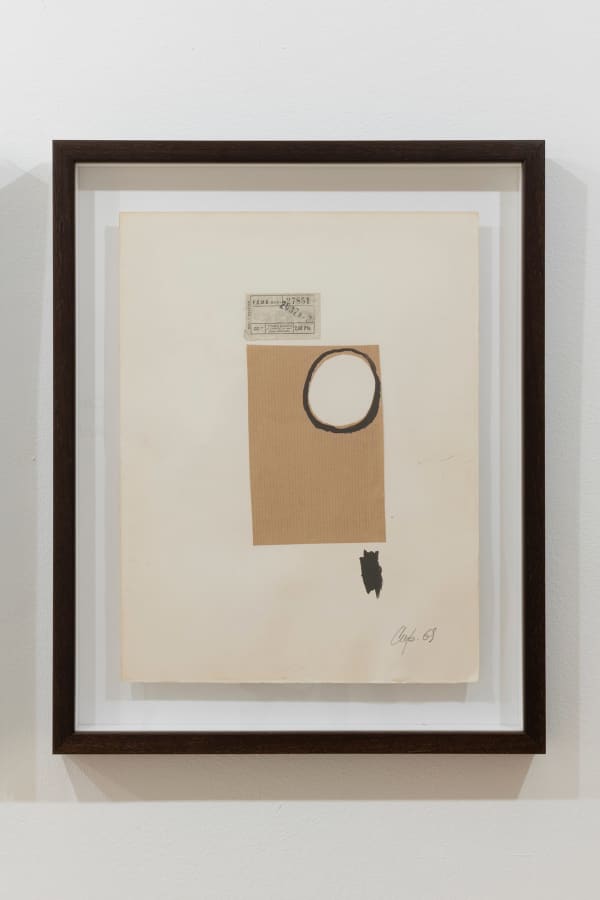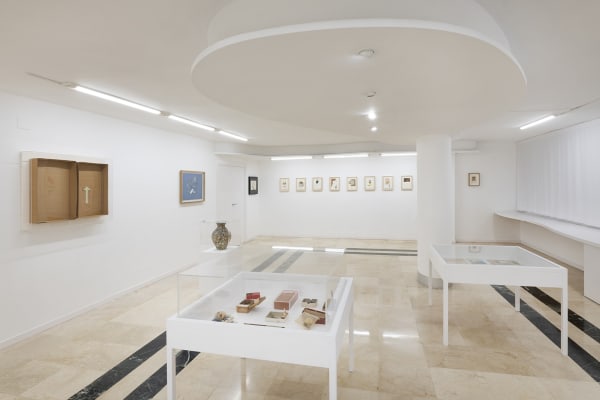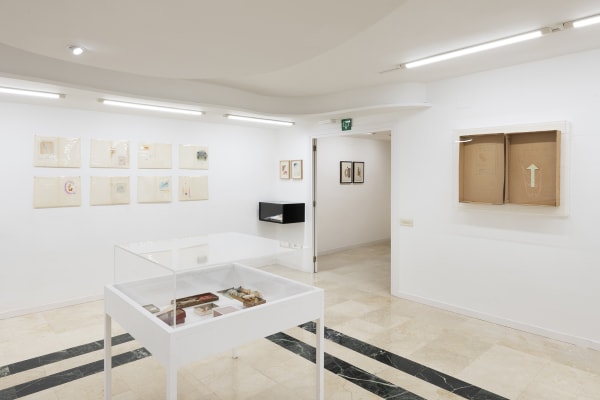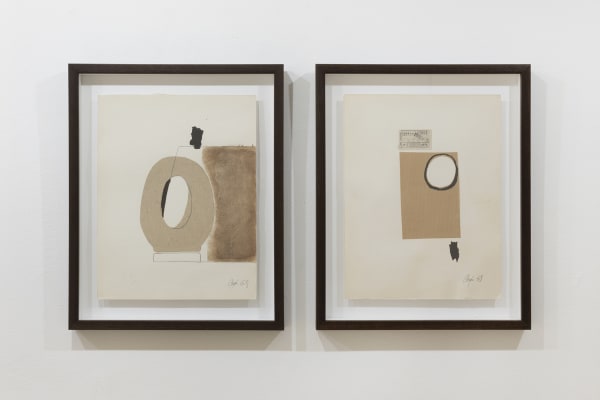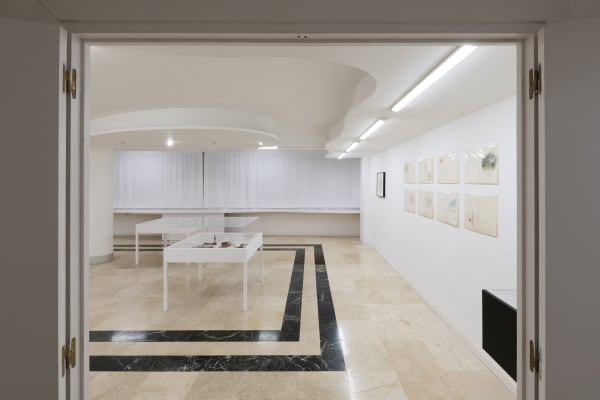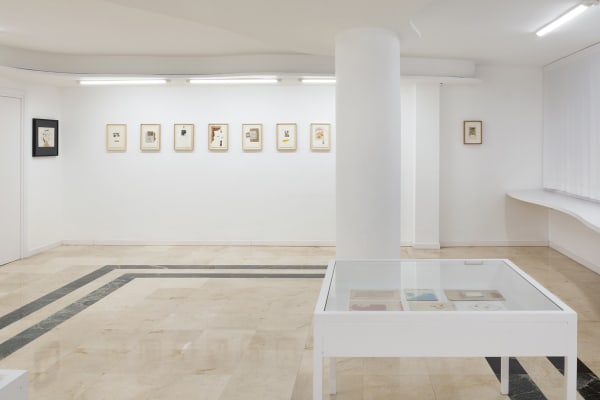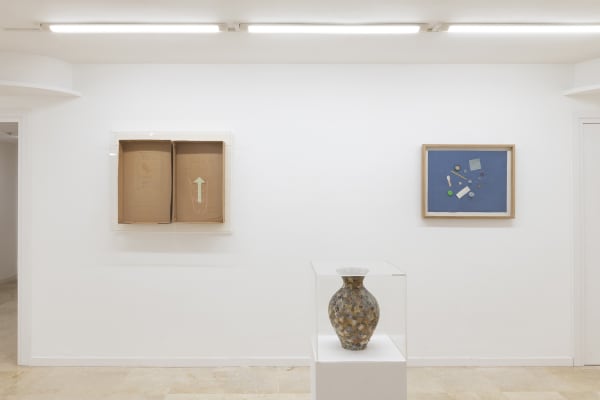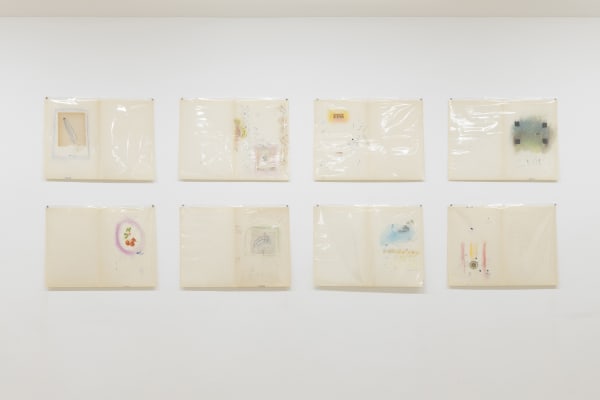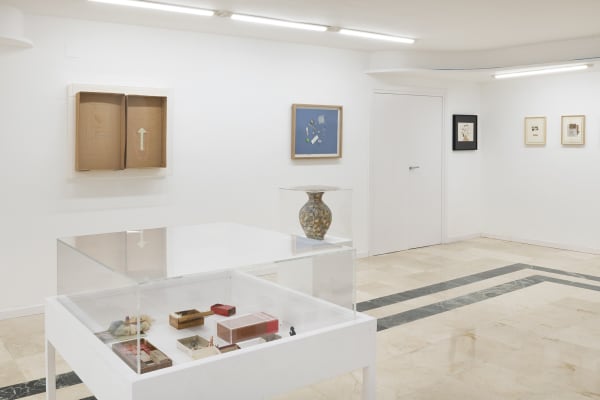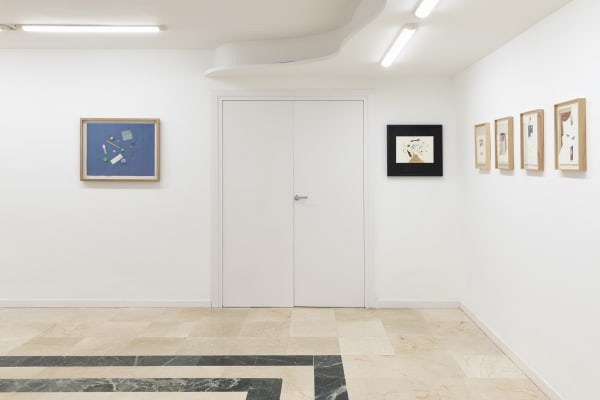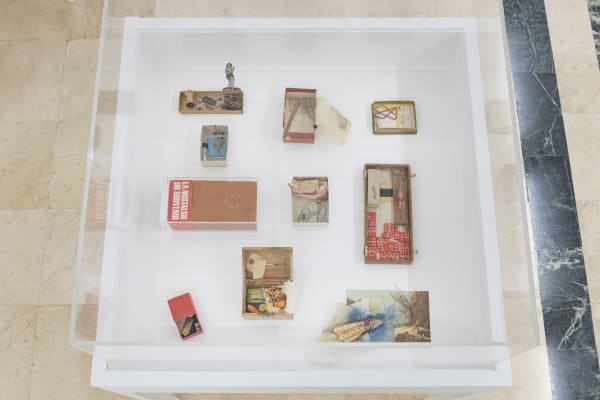Antiguo: Carlos Pazos + ADN Collection: Erik Dietman · Robert Filliou · Hessie · Jean Tinguely · Endré Tot
In Antiguo, a group of works from Carlos Pazos' early years come together with a selection of works from ADN collection.
The opening will take place on February 11, 12 pm, at ADN Galeria.
In Antiguo there is a group of works from Carlos Pazos' early years as an artist and a selection of works from ADN collection by artists such as Hessie, Erik Dietman, Robert Filliou, Endré Tot and Jean Tinguely. This selection demonstrates the proximity in language and phonemes between works that have their own discourse and syntax. So, it is a question of recognizing influences, respect and admiration, in the initial configuration of Pazos' work, which has always been reluctant to be corseted in manifest affiliations and taxonomic labels.
When the young Carlos Pazos began his career as an artist, he lived in Barcelona, he was 19 years old and had left his degree in architecture. It was in the late 1960s and the early 1970s. At this time the neo-avant-garde waves that were leading international contemporary art were not known in Spain.
The limited circulation of information imposed by the Francoist dictatorship motivated many ones, like Pazos, to take advantage of the proximity to France to soak up everything that was happening abroad. There the artist sometimes obtained magazines such as L'Art Vivant by Catherine Millet or Artitudes. It was in Artitude were he saw the work of Gina Pane with self-harm and razor blades, an element that in Antiguo is featured in works on paper such as S.T. Cuchilla y Papel Rosa (1971) and S.T. Cuchilla y Pelos (1972).
Another source of initial knowledge about what was happening comes through the Serra d'Or magazine and the articles by Alexandre Cirici Pellicer, and from his teachers at EINA: Albert Ràfols Casamada, Antoni Llena and Alexandre Cirici himself. From a non-historicist perspective and focused on artistic practice, they provided references to the avant-garde and pop, povera and conceptual art. From this moment, Pazos especially remembers the interest aroused in him by a Mail Art catalog in which tampons were used: a resource that guides the nine pieces of the Láminas para Iluminar series present in this exhibition.
To contemplate all these possibilities that opened up before him, also recovering childhood memories, led Pazos to work with block letters and stamps with which he played at being a typographer. Thus, and adding a deliberate pictorial amateurism, he achieved a loose graphics similar to the popular works made with a stamp by Endré Tot and also to the celebratory drawings, and critical of gestural informalism, by Jean Tinguely and his méta-matics. In fact, Carlos Pazos was lucky enough to witness one of the swiss's first machines in one of his multiple trips to Paris. At the same time, Pazos began another initial path of creation working with found objects. This is how his well-known small-format Tesoros and Relicarios appear, leading to a practice comparable to ones by Hessie, Erik Dietman and Robert Filliou.
This initial production was interrupted in 1974, when Pazos temporarily stopped working in the workshop to create his "star" character: a celebrity that touches tangentially the performative idea by artists such as Chris Burden, Vito Acconchi, Denis Openheim and Laurie Anderson, who starred in various actions between 1975 and 1981, reappeared in the 2000s with the Robados series, and who will soon appear again in the new photographic series Quise hacer de mí una estrella.
Already well into the 1980s, Pazos worked again with found objects, initially generating intimate containments formalized as collages on paper, of which we present a selection from Livre de Brouillon. These small-format pieces, which work as souvenirs, later expand theirselves ambitiously to create climatic atmospheres that occupy entire rooms.
Thus, this journey ends up closing a cycle in which Carlos Pazos absorbs the practices of those "antiguos" to sublimate them all with his "star", and when the character disappears from the scene, the artist returns to the initial strategies, but now with his own personal poetic mythology: the one that corresponds to an artist who does not want to be theoretical or nostalgic, but rather a timeless melancholic.

-
 Erik Dietman, Klee m'a dit que, 1975
Erik Dietman, Klee m'a dit que, 1975 -
 Erik DIetman, 47,1 cm of Taylor zinc oxideplaster BPC (made in England), 1963
Erik DIetman, 47,1 cm of Taylor zinc oxideplaster BPC (made in England), 1963 -
 Robert Filliou, Drunken Horse, 1972
Robert Filliou, Drunken Horse, 1972 -
 Robert Filliou, La nostalgie du souvenir, 1980
Robert Filliou, La nostalgie du souvenir, 1980 -
 Carlos Pazos, Livre de Brouillon. S/T (Literario Paisaje), 1989
Carlos Pazos, Livre de Brouillon. S/T (Literario Paisaje), 1989 -
 Carlos Pazos, Livre de Brouillon. S/T (Gruta), 1988
Carlos Pazos, Livre de Brouillon. S/T (Gruta), 1988 -
 Carlos Pazos, Livre de Brouillon. S/T (Humo de luz), 1987
Carlos Pazos, Livre de Brouillon. S/T (Humo de luz), 1987 -
 Carlos Pazos, Livre de Brouillon. S/T (Jealousie), 1992
Carlos Pazos, Livre de Brouillon. S/T (Jealousie), 1992 -
 Carlos Pazos, Livre de Brouillon. S/T (Luna de piel), 1986
Carlos Pazos, Livre de Brouillon. S/T (Luna de piel), 1986 -
 Hessie, Sans Titre, 1970
Hessie, Sans Titre, 1970 -
 Jean Tinguely, Méta-matic nº8, 1974
Jean Tinguely, Méta-matic nº8, 1974 -
 Endre Tót, Stamps instead of coke, 1971
Endre Tót, Stamps instead of coke, 1971 -
 Carlos Pazos, Livre de Brouillon. S/T (CRASH), 1989
Carlos Pazos, Livre de Brouillon. S/T (CRASH), 1989 -
 Carlos Pazos, Livre de Brouillon. S/T (The Book of Love), 1986
Carlos Pazos, Livre de Brouillon. S/T (The Book of Love), 1986 -
 Carlos Pazos, Láminas para iluminar (1a1), ca. 1973
Carlos Pazos, Láminas para iluminar (1a1), ca. 1973 -
 Carlos Pazos, Láminas para iluminar (bandera y timbre), ca. 1973
Carlos Pazos, Láminas para iluminar (bandera y timbre), ca. 1973 -
 Carlos Pazos, Láminas para iluminar (cine), ca. 1973
Carlos Pazos, Láminas para iluminar (cine), ca. 1973 -
 Carlos Pazos, Láminas para iluminar (cireres), ca. 1973
Carlos Pazos, Láminas para iluminar (cireres), ca. 1973 -
 Carlos Pazos, Láminas para iluminar (escut Barcelona), ca. 1973
Carlos Pazos, Láminas para iluminar (escut Barcelona), ca. 1973 -
 Carlos Pazos, Láminas para iluminar (Mickey con tarta), 1973
Carlos Pazos, Láminas para iluminar (Mickey con tarta), 1973 -
 Carlos Pazos, Láminas para iluminar (paisaje 1001), 1973
Carlos Pazos, Láminas para iluminar (paisaje 1001), 1973 -
 Carlos Pazos, Láminas para iluminar (segunda 1), ca. 1973
Carlos Pazos, Láminas para iluminar (segunda 1), ca. 1973 -
 Carlos Pazos, Paca, la culona, 1974
Carlos Pazos, Paca, la culona, 1974 -
 Carlos Pazos, S.T. (3 tiritas), ND
Carlos Pazos, S.T. (3 tiritas), ND -
 Carlos Pazos, S.T. (cartón), 1969
Carlos Pazos, S.T. (cartón), 1969 -
 Carlos Pazos, S.T. (sello 2pts), 1969
Carlos Pazos, S.T. (sello 2pts), 1969

